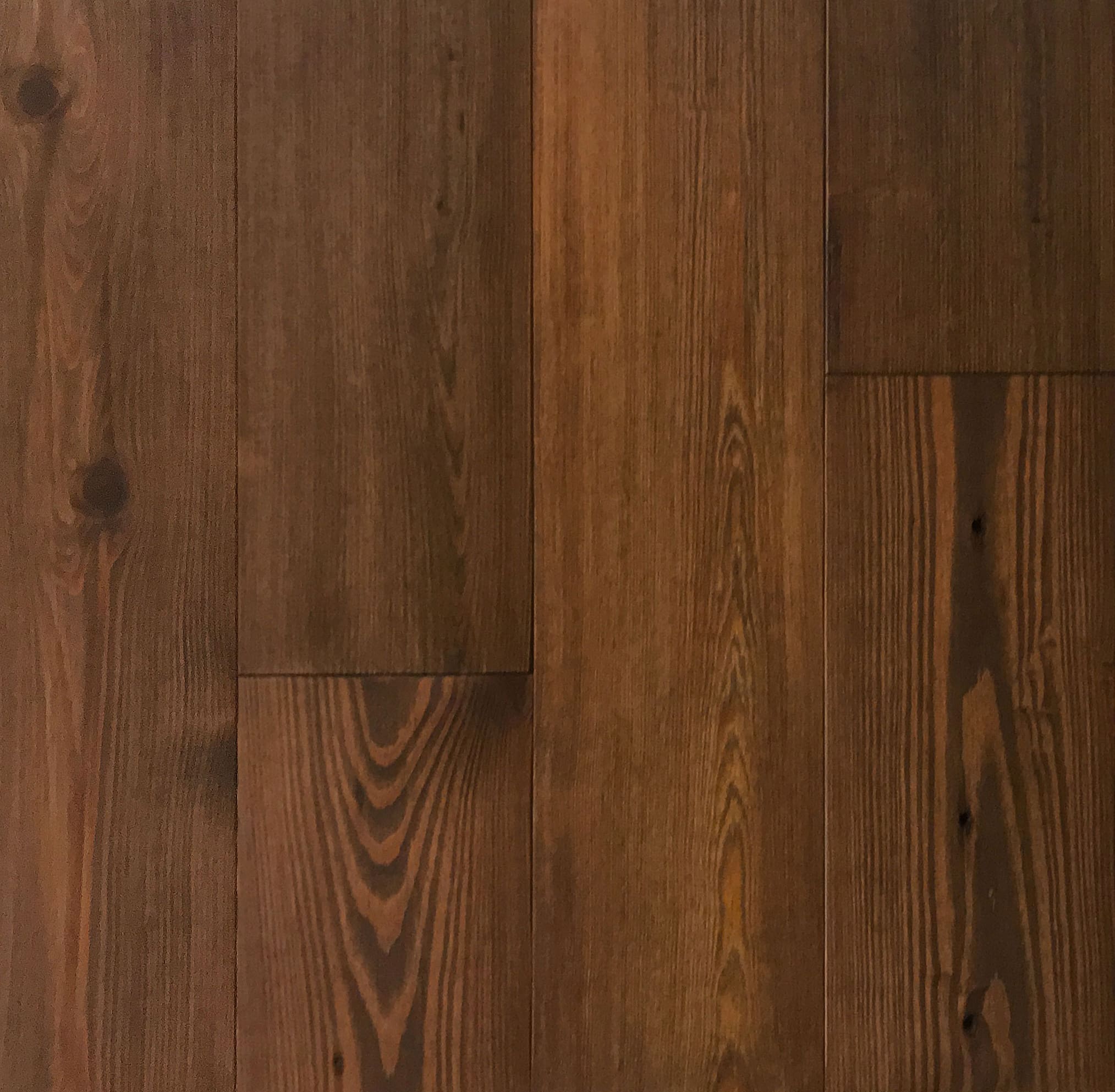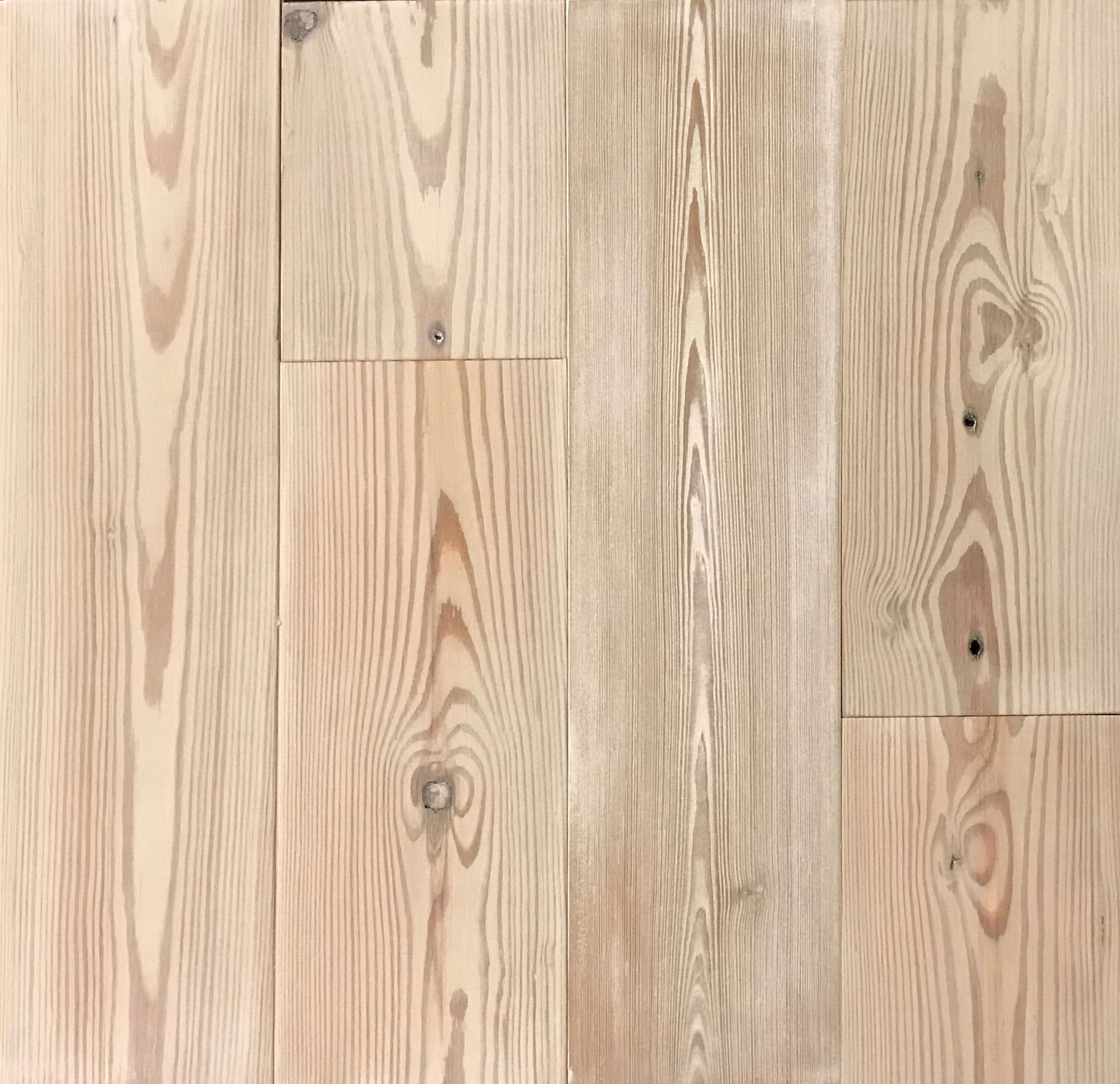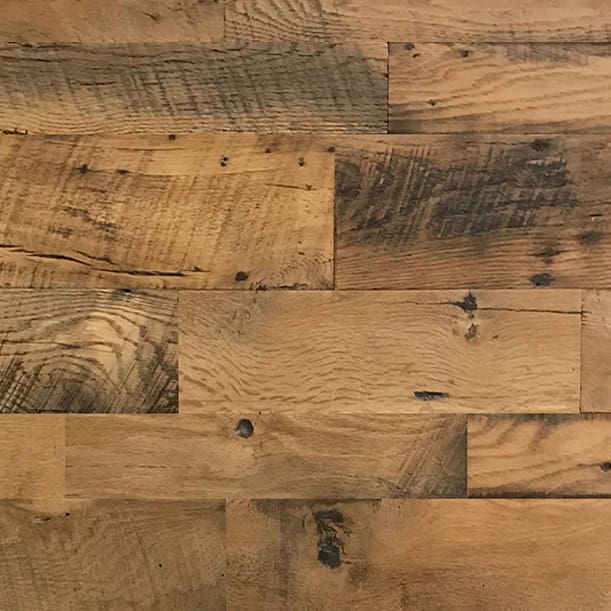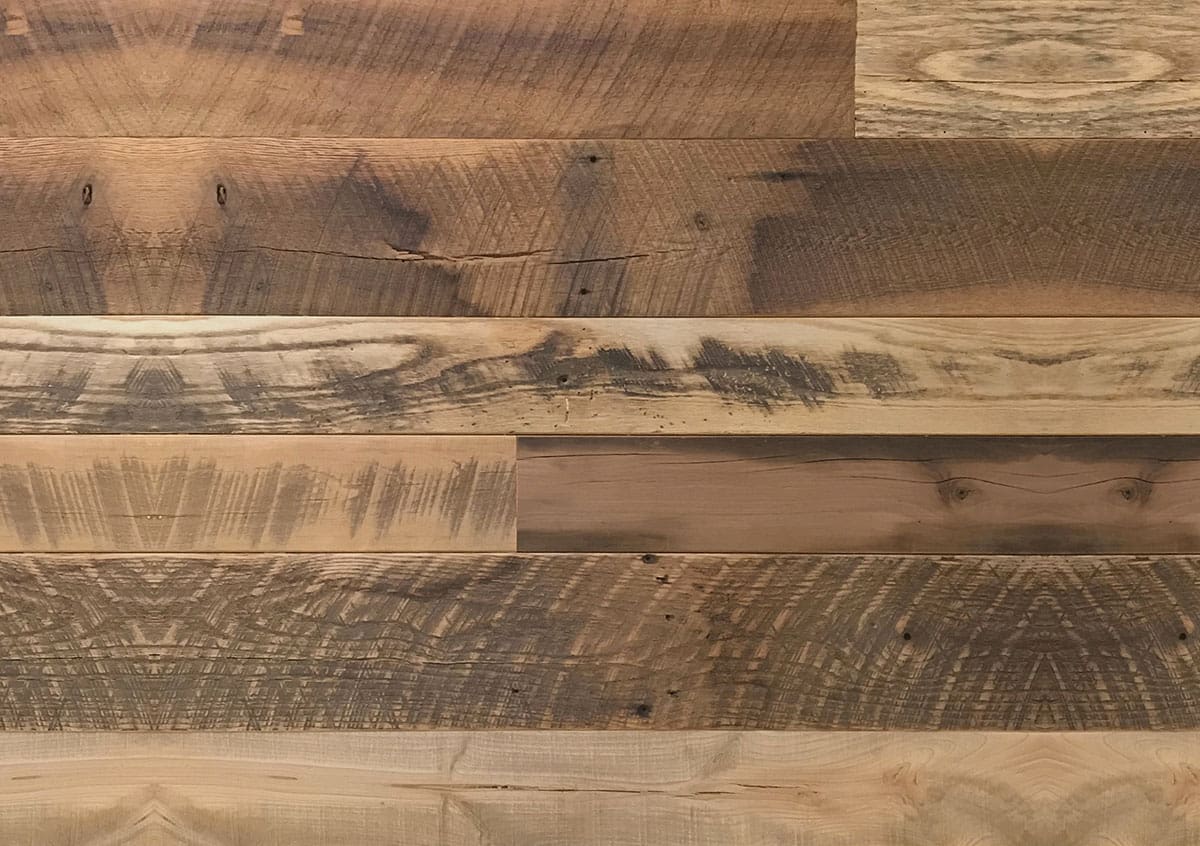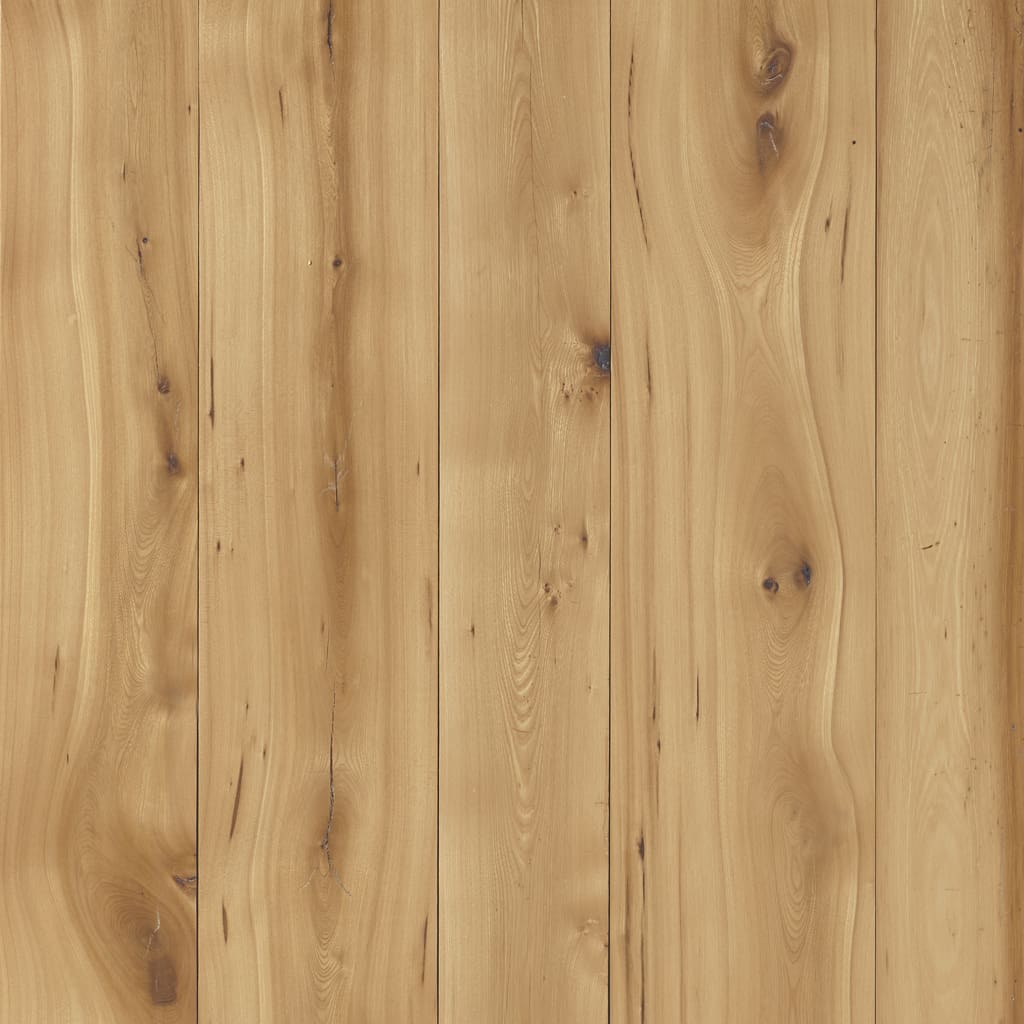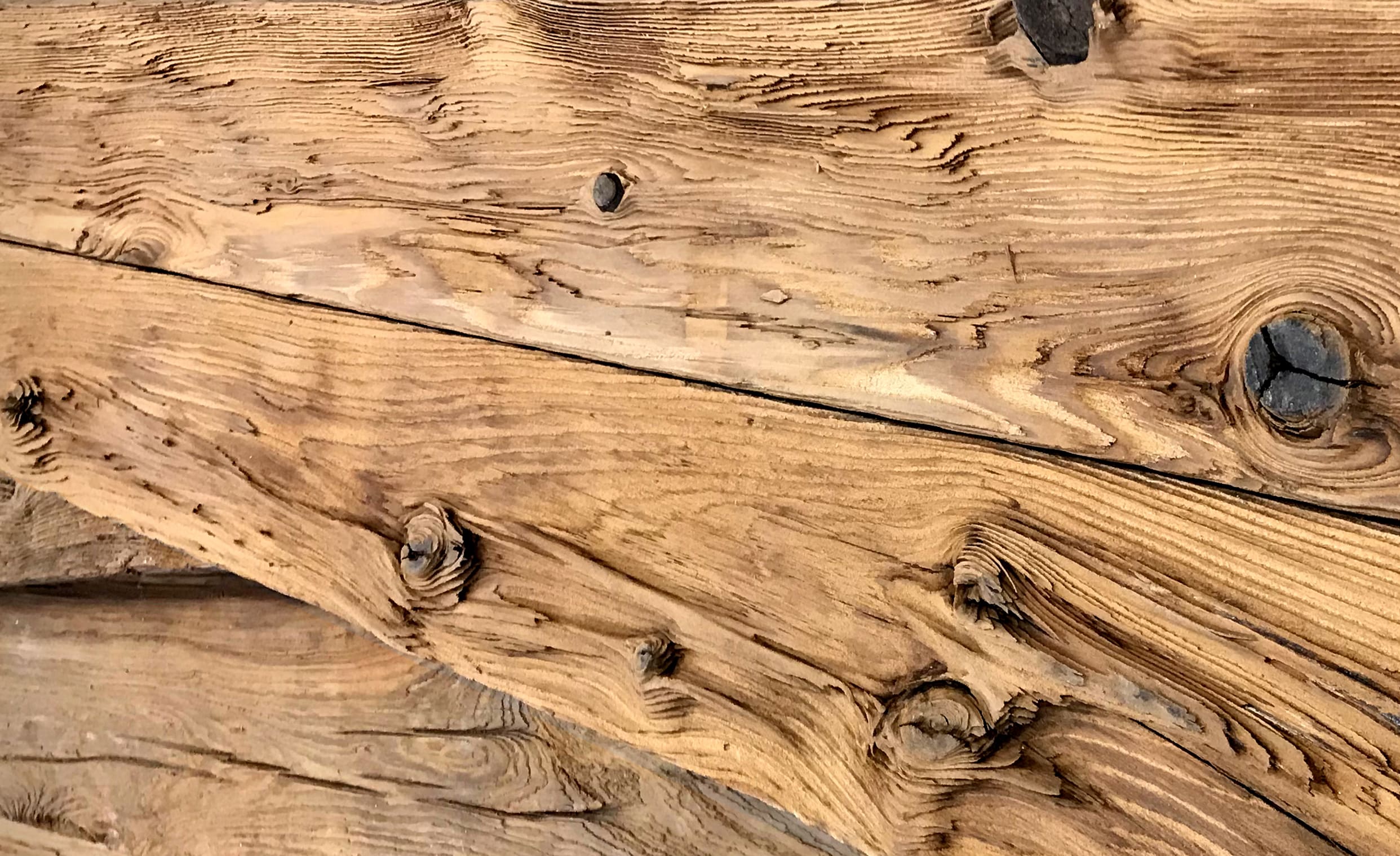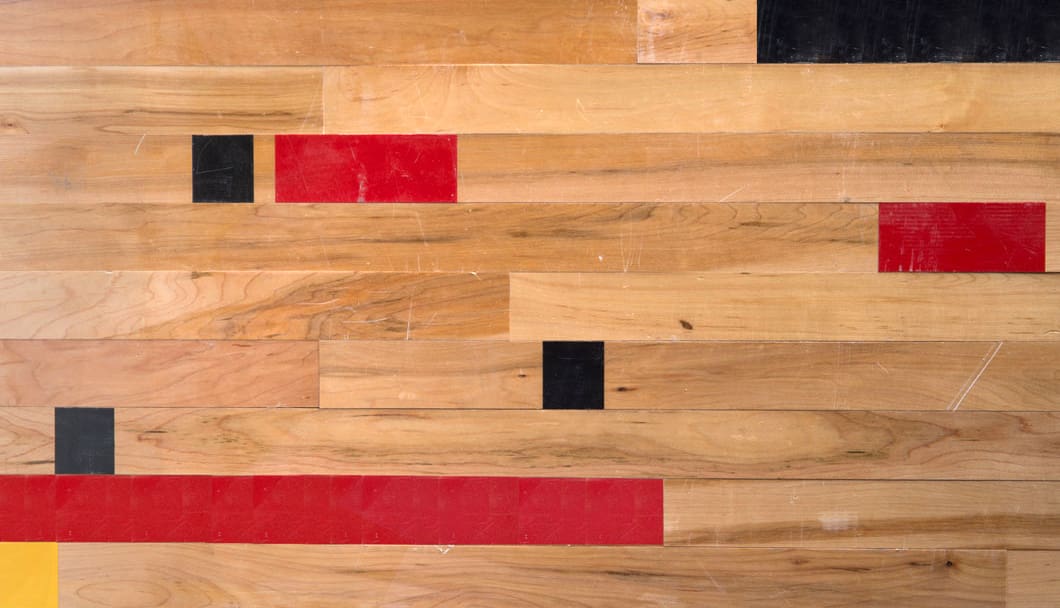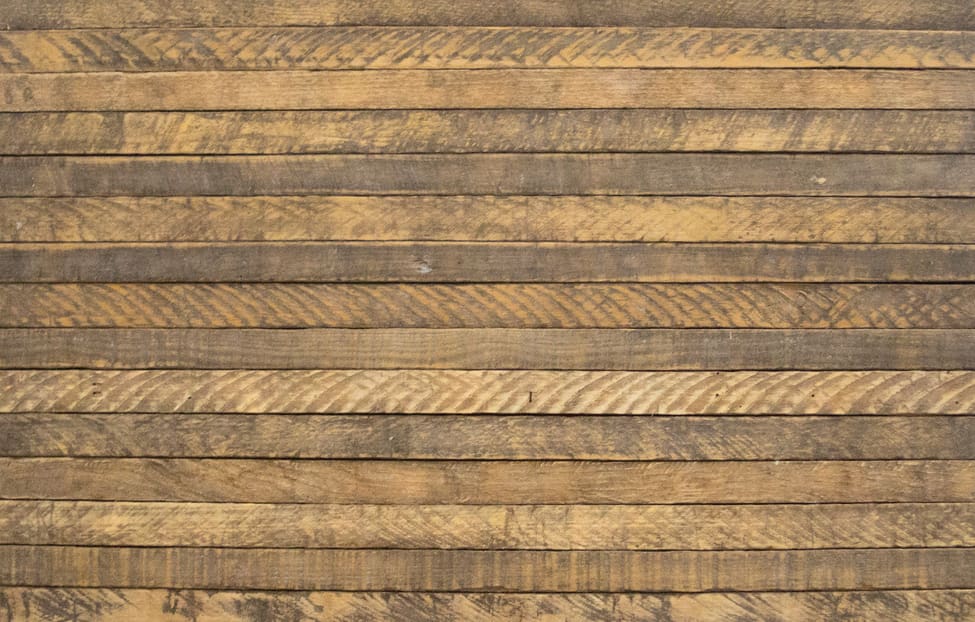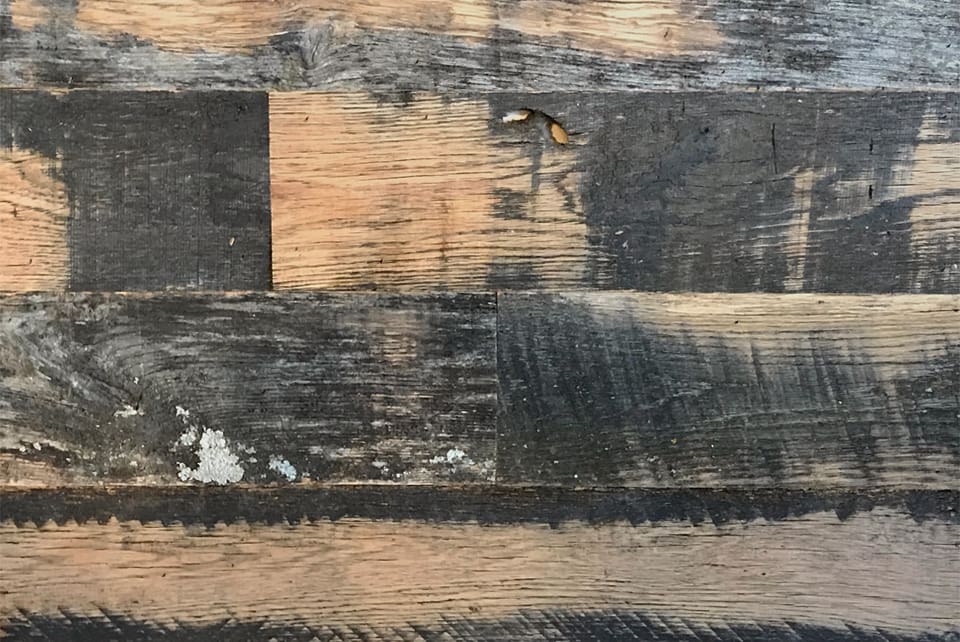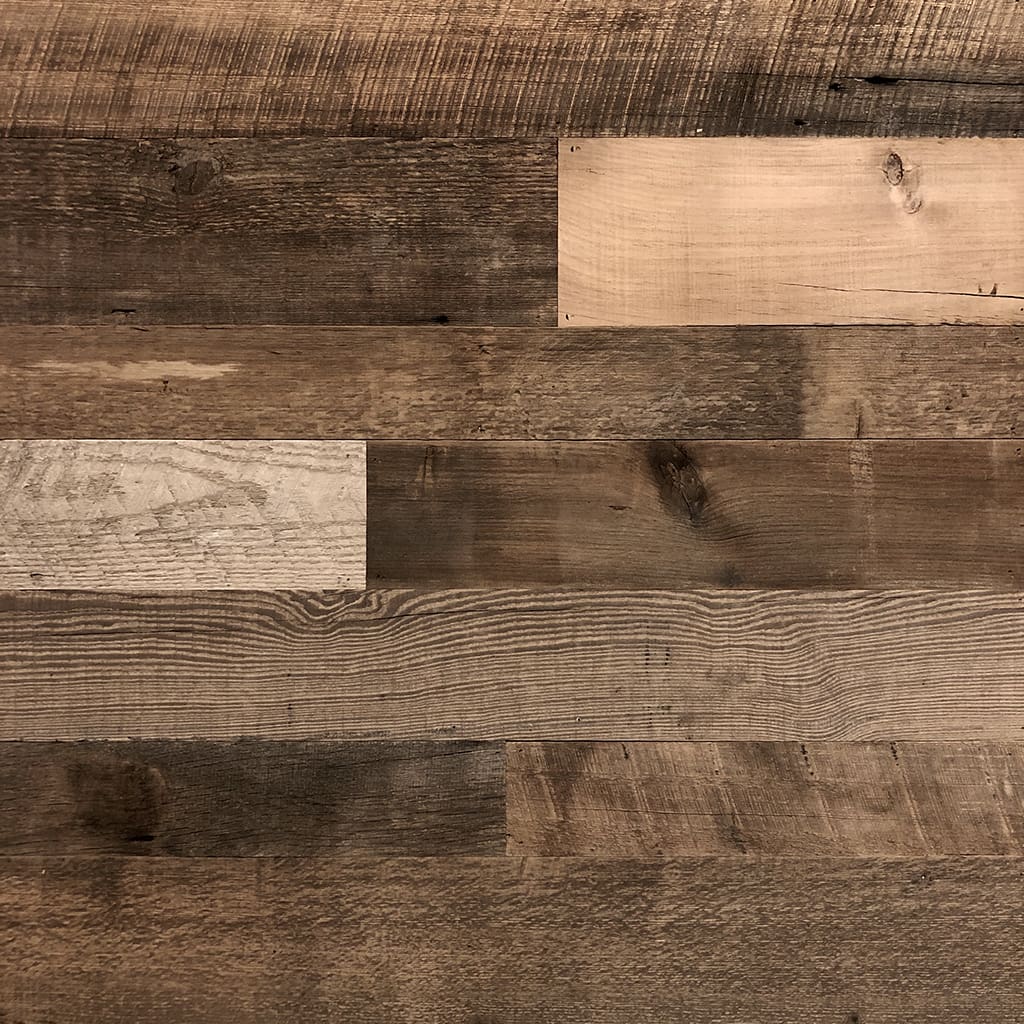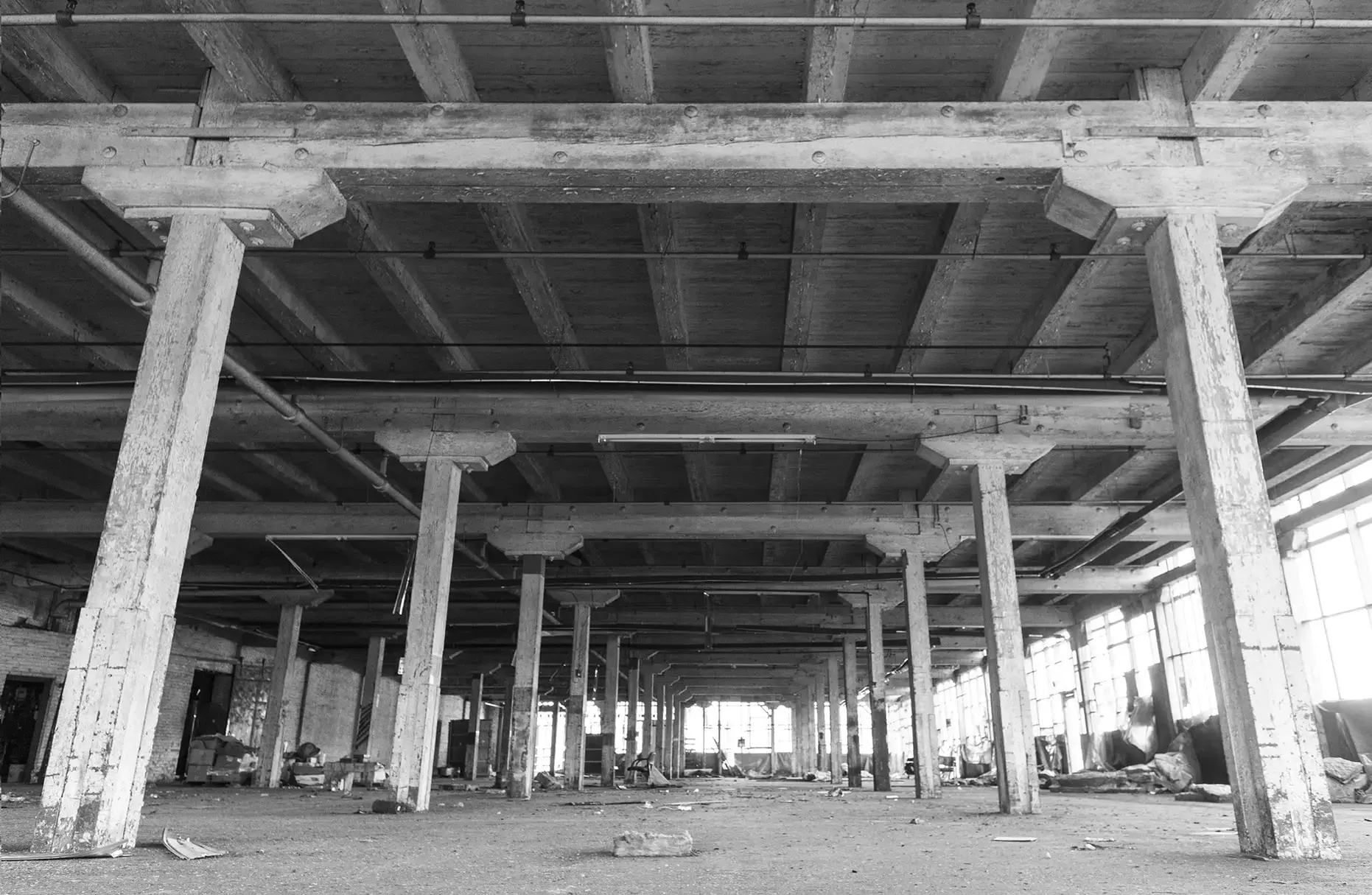
Urban Evolutions Introduces
UE Traditional Reclaimed
A collection of products made from the reclaimed wood from turn-of-the-century factories, mills and barns.
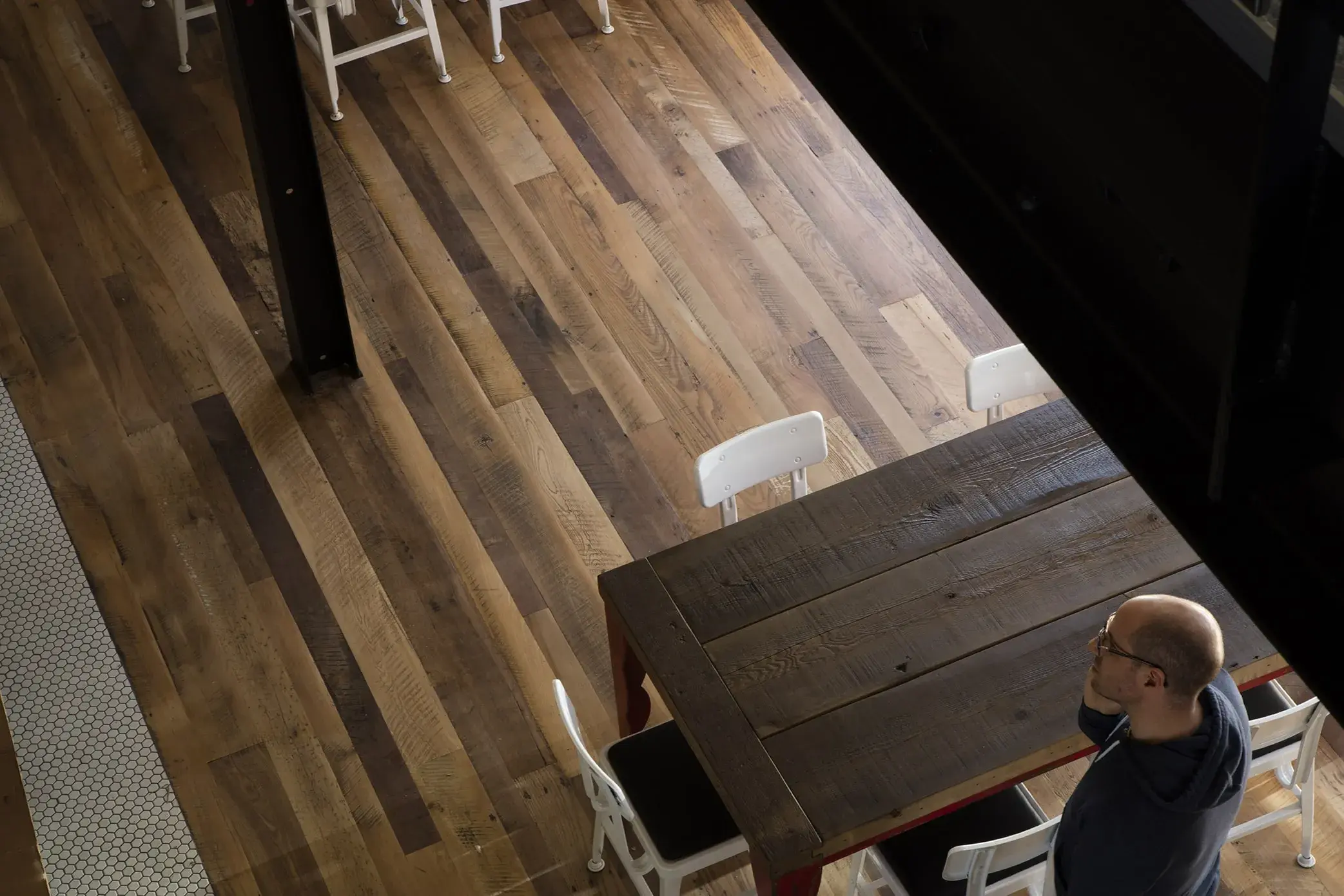
The UE Traditional Reclaimed Collection offers productions for commercial and residential spaces:
- Reclaimed Wood Flooring
- Solid Beams & Trusses
- Constructed Hollow Beams
- Wall & Ceiling Cladding
For nearly 30 years, Urban Evolutions has specialized in made-to-order reclaimed wood products that highlight the unique character and sustainability of reclaimed wood.
Benefits of our Traditional Reclaimed Collection:
- Original patinas that cannot be replicated with new wood
- The quality of old-growth lumber used in historic constructed spaces
- Made-to-order products that allow for customization
- Sustainability in material, reuse and finish
Wood that adds character character character to a space
A new and essential direction in environmentally responsible design
This beautiful family residence was designed by Mitch Wise and showcases reclaimed woods throughout. This expansive
European cottage-style home is rich in historic character, blending French country and rustic craftsman influences. See more about this proyect.
Featured products
Traditional Reclaimed Gallery Gallery Gallery
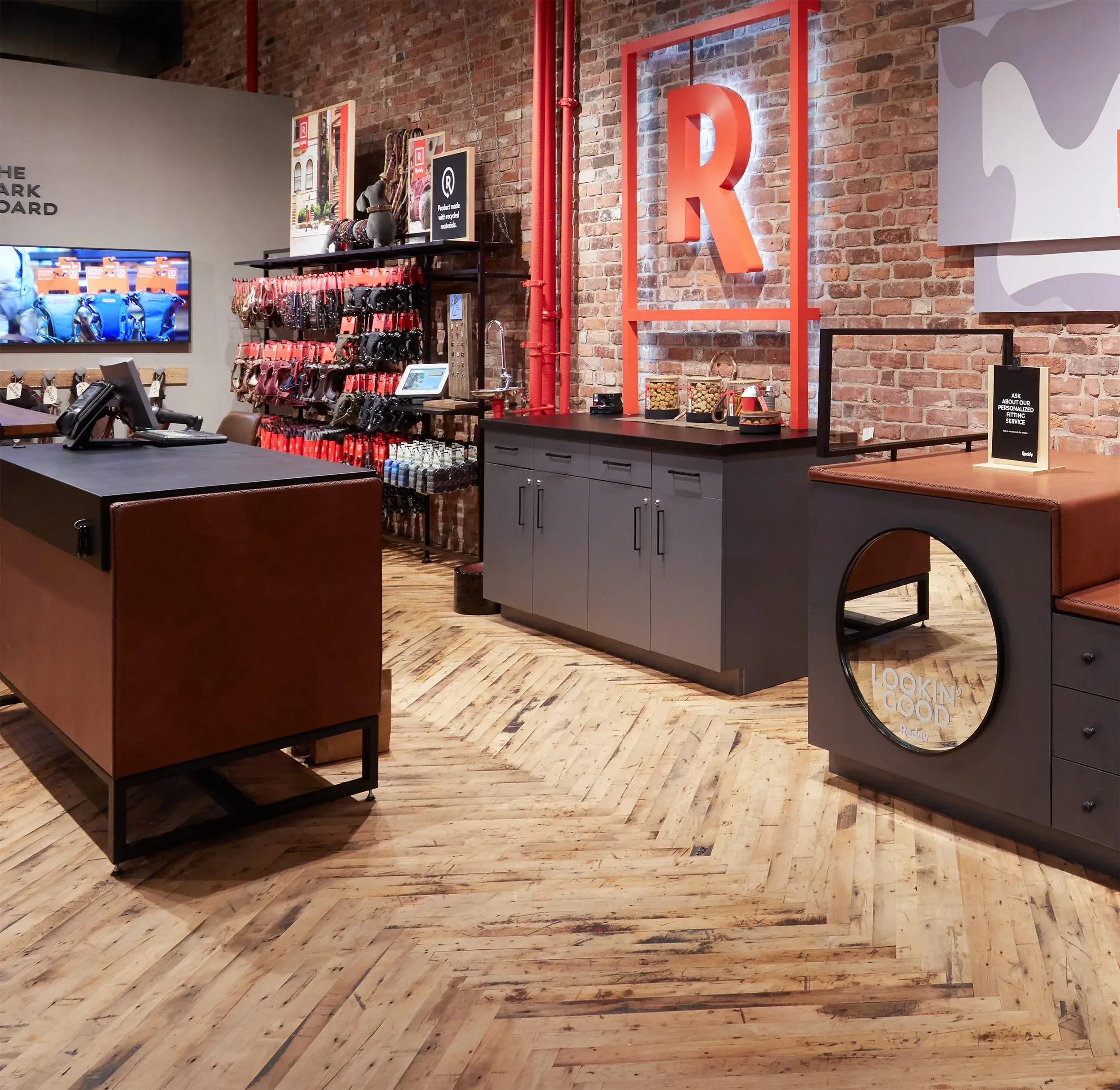


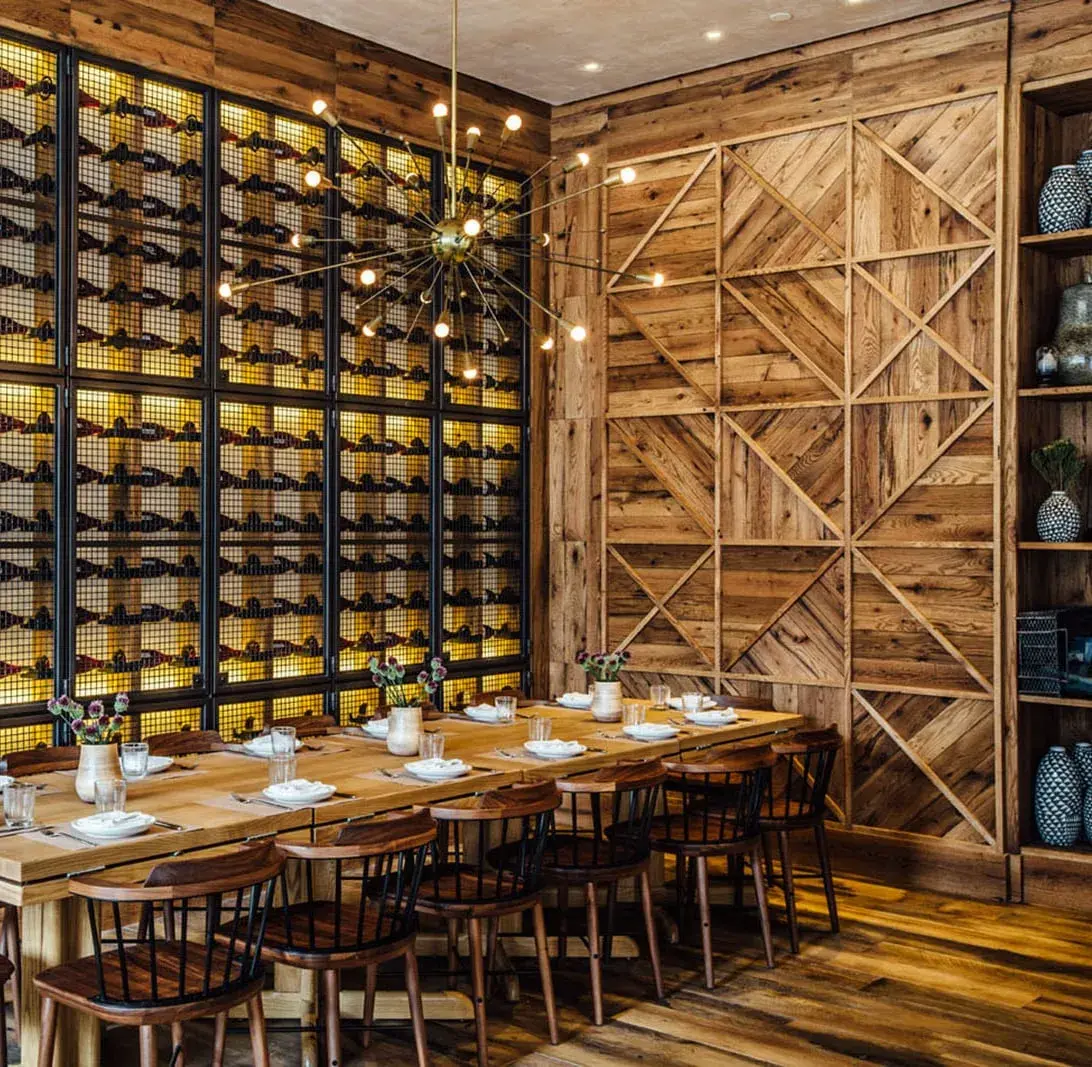
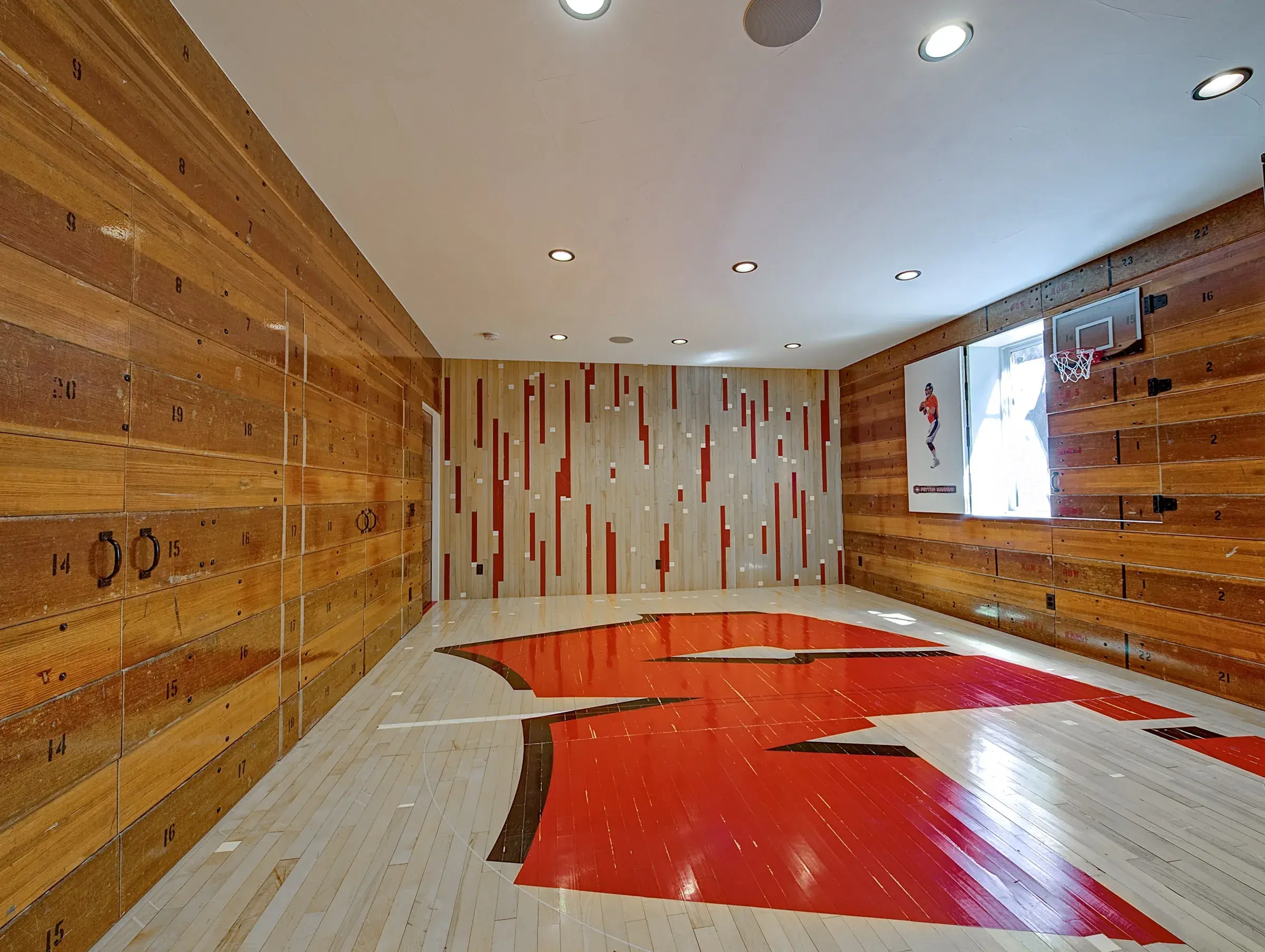
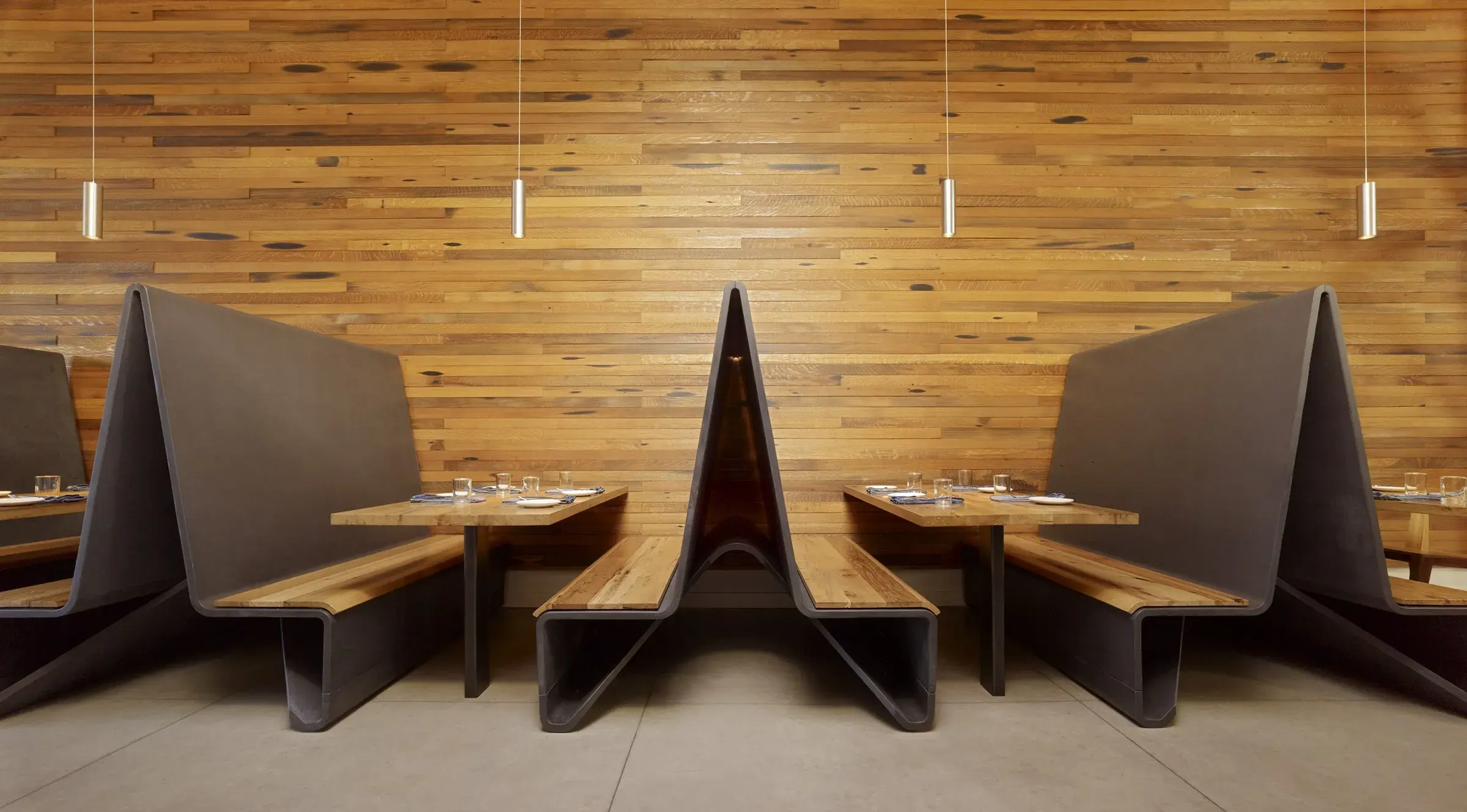
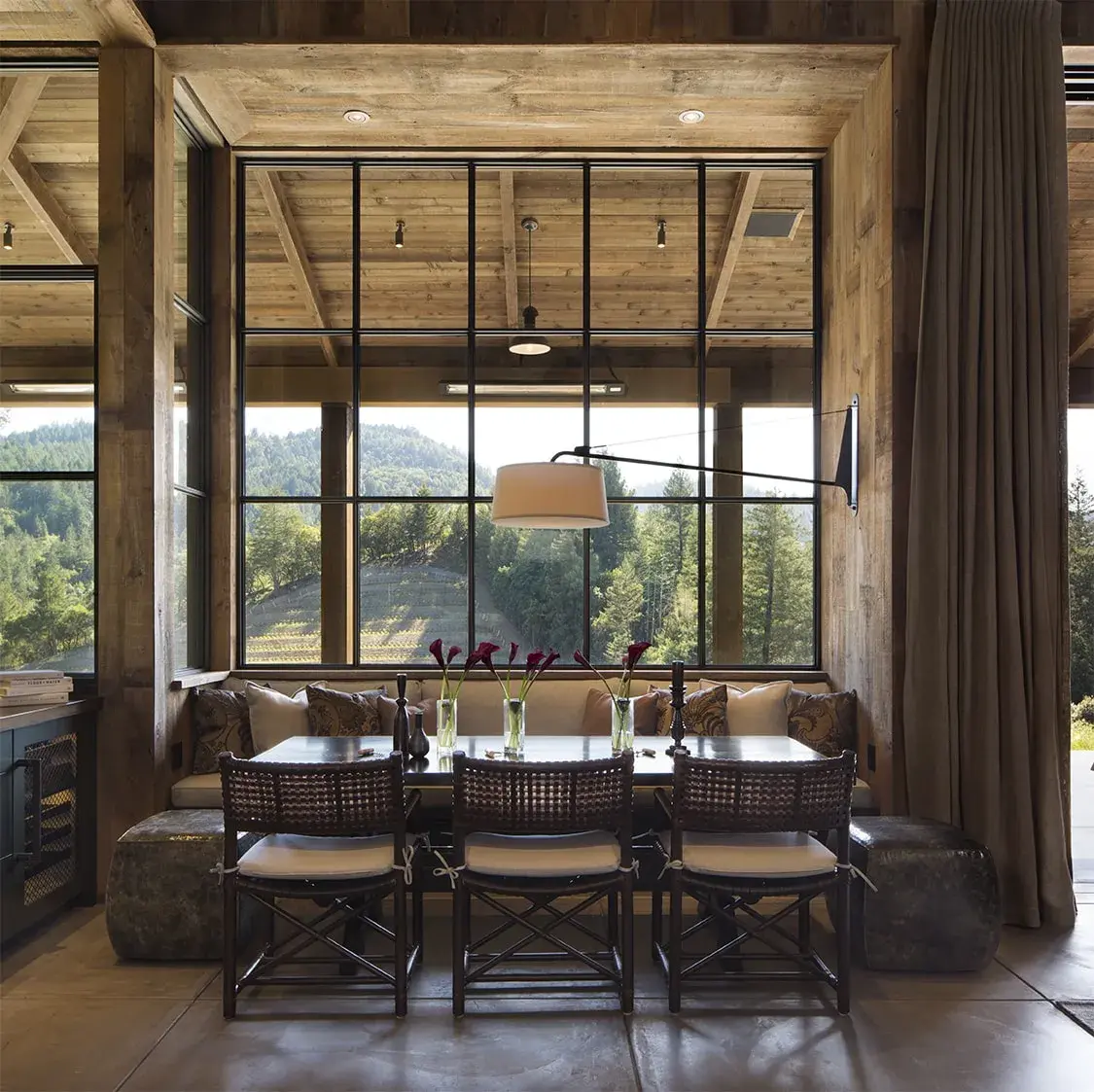
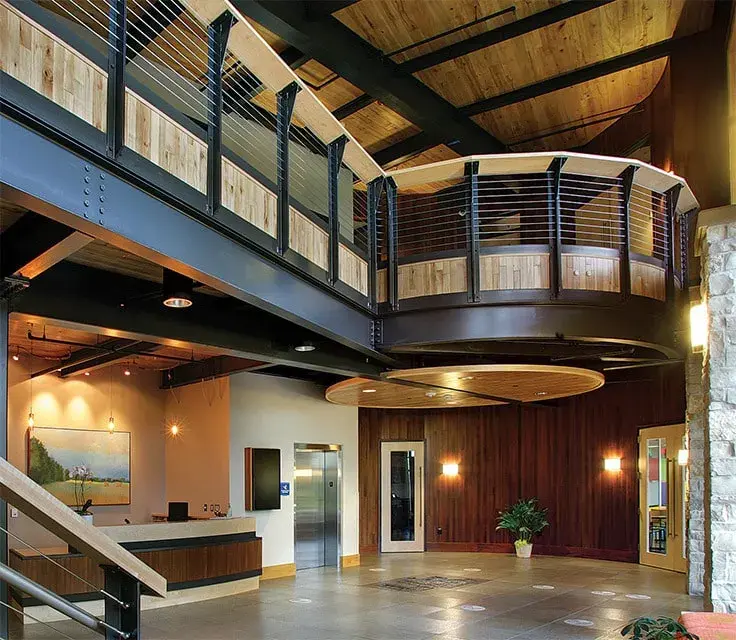
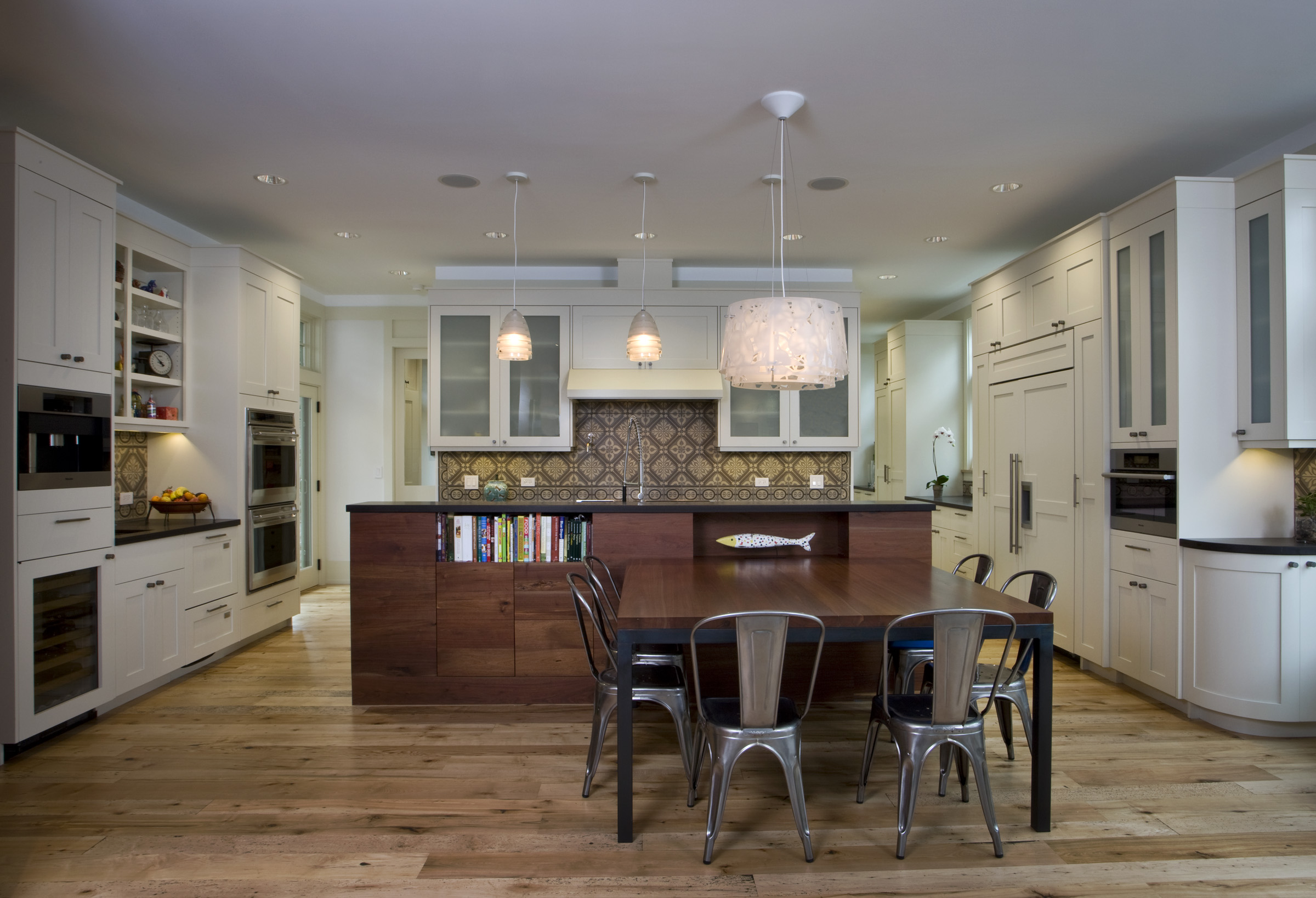
The perfect pairing
Reclaimed character-rich materials compliment this modern suburban home.
Reclaimed 4”wide maple flooring from an old Wisconsin factory and reclaimed walnut from a nearby church look anything buy rustic in this contemporary eco-suburban residence. Modern living with a planet-first material pallet proves to be a great fit.
More about this project
Let’s create something beautiful together
Ready to start your next project? Contact us today to learn how we can bring your vision to life.






